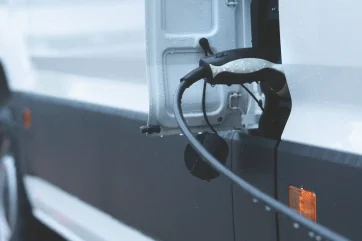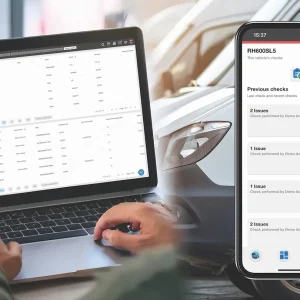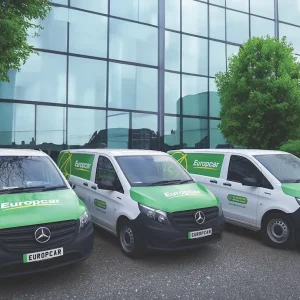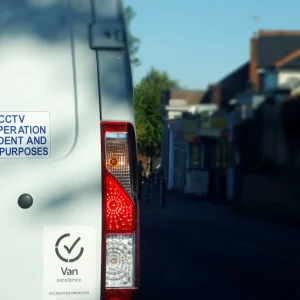
It seems safe to say that the UK’s electric van market in 2025 could be healthier. Sure, registrations are up year-on-year, but to the end of August their market share is still only 8.4%, well below the 16% required by the UK government’s ZEV mandate. And if the picture for electric vans generally is sub-par, then the worst specific sector for the vehicles must surely be rental, with the BVRLA’s latest ‘Road to Zero’ report revealing that the utilisation level of electric vans on rental fleets has actually decreased, from 81% in 2024 to 77% in 2025, compared with 86% for rental vans generally.
While these figures reflect general operator concerns regarding EVs, there is also a specific issue that could be pushing the supply of electric rental vans ahead of demand, as Sarah Gray, head of ZEV strategy and development at Dawsongroup, explains.
“I think most rental and leasing operators wouldn’t be able to go to a manufacturer and order X number of diesels without them coming back and saying they need to do 10%, 20%, whatever they deem acceptable as electric.
“If you’re a van operator that generally runs vehicles for four years, every year you’re going to have a quarter of your old fleet that needs changing, and you have to take a proportion of those as electric.”
Gray adds that once rental companies have been forced to buy these vans, they are then delayed by the process needed for customers to incorporate them properly, including a detailed charging plan.
She says: “If you’ve been forced to take electric and you kind of give them to your customers and say ‘have a go’ without that plan of how they’re going to make them work properly, they’ll just hand them back and say they’re not going to work.
“Now we’ve kind of all got it, that actually the customer needs this journey, and that takes time – [but] you still have to buy the electric vehicle. So, the electric vehicles are literally sat there waiting for the customers to go, ‘Oh, actually, thank you for taking me through that six-month process. I’m ready to take a vehicle now’.”
Gray, who also chairs the BVRLA’s commercial vehicle committee, notes that the picture is more favourable in the longer-term rental sector where Dawsongroup operates than in short-term rental.
She says: “I think anyone taking a short-term electric van will probably point-blank refuse because they might not have infrastructure – they don’t have to install any infrastructure, but to take it is going to be a complete change of operation.
“Then there’s longer-term rental – that’s the market that I’m in – where customers tend to take vehicles for a couple of years and they’re a bit more open to installing infrastructure, understanding how they would make a vehicle work, potentially on a public charging network.
“[Although] when using public charging, the cost is really unpredictable. You might find a charge point which is at 45p per kWh and I think that would be deemed as reasonable, and then you might find yourself at a different one which is 85p per kWh. So, in actually trying to model that and work on some sort of total cost of ownership, where you’re going to understand how these vehicles are going to cost you, it’s very difficult.”
BVRLA head of decarbonisation and future mobility, Catherine Bowen, says: “We did a fleet charging guide a good few years ago now and showed that actually,
a lot of vans get taken home by the drivers, they’re not necessarily depot-based. So, companies like British Gas, I think, have predicted that about 75–80% of their drivers will take vehicles home and not have the ability to charge at home, so that then pushes them to use the public network and then brings all of those issues with cost, and not just the cost of charging, but the cost of downtime.
“Where people have got depots, to get the grid connection could also be really costly and really complicated.”
Charging is also highlighted as an issue by Neil McCrossan, managing director of rental company Northgate, who says he is not surprised by the BVRLA’s findings.
“While EV infrastructure has come a long way in recent years, most of the progress has focused on cars and the commercial vehicle sector has largely been left behind,” he says.
“We regularly speak with customers and drivers about their views on electrification, and there are some recurring barriers. A major one is charging: many van drivers take their vehicles home, but without a driveway or suitable on-street charging, they simply don’t have the ability to charge conveniently.
“Even where charging is possible, there’s still uncertainty around electricity reimbursements. The recent update to AER is a step in the right direction, but drivers relying on public rapid or ultra-rapid charging often find themselves out of pocket.
“Cost is another concern. EVs generally cost more than equivalent diesel vans and while our consultancy team has shown that EVs can save fleets money under the right circumstances, heavy reliance on rapid charging when drivers are on the road can quickly erode those savings.”
Despite these issues, McCrossan says that Northgate has seen a slight uptick
in demand for electric vans year-on-year, which he attributes to improving vehicle technology and battery range, with some lower-mileage urban operators making the vehicles work for them.
However, he adds: “Practical challenges remain, particularly around payload and range. Heavy batteries reduce carrying capacity, and higher payloads quickly erode a vehicle’s available range, meaning diesels are still more practical, particularly in higher-mileage operations.”
Another rental company, Europcar, says it has invested in making electric van rental more attractive, including with its EV Assist service to provide guidance and support, and a partnership with Octopus Electroverse designed to provide a seamless charging experience. However, it is also not surprised that the BVRLA has found a drop in electric rental van utilisation.
Europcar trucks and vans director, Keith Shorter, says: “There are still a number of barriers that businesses are finding difficult to overcome.
“The OEMs are working hard to offer more choice. There are now around 40 different zero-emission van models to choose from. However, recent research
we commissioned amongst fleet operators that use commercial vehicles found that range and charging options are still holding them back. The reality is the infrastructure still isn’t fit for purpose for electric vans.
“Whilst 61% of the fleet operators who took part in our research are already using e-vans, 45% said they face challenges with the real-world range; 33% are concerned that public charging is unsuitable for vans. Of the 39% of operators who do not yet have e-vans on fleet, 38% said this was because they do not consider electric vans to be fit for purpose and 15% put it down to cost. [And] 46% said they would add e-vans to their fleet if they had a longer range.”
Shorter argues that rental allows fleets to try out electric vans in a real-world working environment, on a more thorough basis than a manufacturer test drive.
However, Gray cautions that electric van trial rentals still need to be properly planned.
She says: “There might be a customer that has charge points in their car park because they already have electric company cars and they go, ‘Brilliant, we can definitely have five electric vans, we know where we’re going to charge them’.
“[But] if you haven’t got that and you take vehicles without having some sort of charge card, [where] you know how you’re paying for the public charging, you know how your employees are claiming that back, any sort of charging plan at all…it’s absolutely not going to work on a short-term try. It does need to be thought through.”
With rented electric vans more likely than owned or leased vans to be reliant on public charging, they are particularly susceptible to problems generally facing vans on the UK network.
Bowen says: “Accessibility of charge points for vans does continue to be a challenge. It’s not just the width and the size of the bay, for public charging quite often there are height restrictions, so if you think of a lot of council car parks or park and rides, quite often they’ve got height restrictions, so a larger van can’t get in.
“When we talk about accessibility, we also talk about things like manoeuvrability and the ease of getting in and out of the space, and the ability to be able to book
a charge point, which every year we try to monitor in the Road to Zero report, but struggle to find anybody who’s doing it.
“I think we’ll see more. I think people are now starting to look at how they can share infrastructure, and booking will probably become more mainstream.”
Regarding what the government could do to help the situation, Bowen says the resolution of outstanding issues with 4.25t electric van MOTs and operating rules would be helpful, as would more support for the used market, and addressing the cost gap between public and private charging.
She adds: “We’ve also been calling for a grid connections fund, which would help businesses install the infrastructure. Not just the charge points, but some of the infrastructure that you need – the cabling, the reinforcement, if you need another substation. A wider fund that could help people make the first steps to installing some of that infrastructure at depots and things like that.”
Europcar’s Shorter says: “We firmly believe that to encourage accelerated take-up of electric vans, the government needs to continue offering financial incentives and amend regulations that impact electric vans, as well as make improvements to ensure the existing and future charging infrastructure is e-van suitable.”





